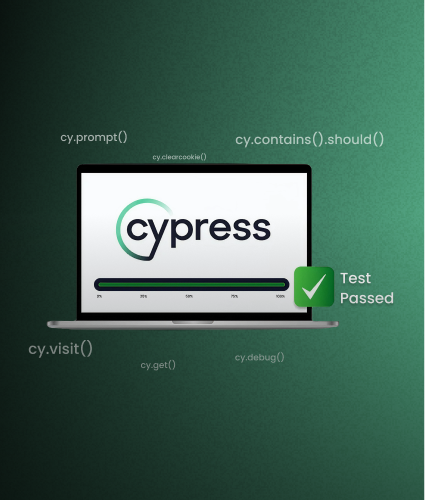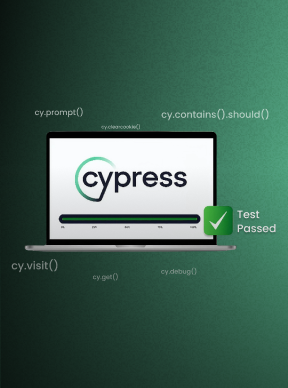Introduction: Why Multilingual Support Matters in 2025
As the world becomes increasingly interconnected, user expectations have evolved. It’s no longer enough to build a sleek interface or a fast-loading React application. Users now expect to interact in their native language.
Whether you're launching a startup in Europe, expanding an existing app into Latin America, or building a platform for global educators, multilingual support gives your product the reach, trust, and accessibility it needs to scale.
In 2025, ignoring multilingual support is like ignoring mobile optimization a decade ago. You’ll miss out on a massive share of your audience. Businesses that invest in multilingual support build stronger trust, increase user satisfaction, and often see better retention rates.
What is i18n?
Internationalization (abbreviated as i18n) refers to designing software so it can easily be adapted to various languages, regions, and cultural norms without requiring a major code rewrite.
It includes aspects like:
- Language translation
- Date/time formatting
- Currency formatting
- Right-to-left (RTL) layout support
- Pluralization rules
- Locale-specific logic
Think of i18n as preparing your house so guests from any culture feel at home. You don’t rebuild the house every time; you just change how it’s decorated, presented, and arranged.
In React applications, internationalization is particularly important because components often reuse text, layouts, and logic. Without proper planning, developers may end up duplicating code or hardcoding text, which makes scaling to multiple languages a nightmare.
My Experience with i18n in React
Back in 2022, I worked on a React-based B2B dashboard product that served users in India and the Middle East. Initially, all text was hardcoded in English.
Then came the request: “Can we support Arabic by next month?” We assumed it would be a quick translation job. Spoiler: it wasn’t.
We had to:
- Refactor over 300 components
- Handle RTL layout bugs
- Separate UI strings from logic
- Support multiple date and currency formats
At first, we underestimated how deeply language impacts UI/UX. Words in Arabic took more space, RTL broke some layouts, and even numbers displayed differently. It was eye-opening to see that i18n was not just about swapping words, but about respecting cultural differences.
That project taught me a lot, especially that internationalization isn’t an afterthought. It must be planned from day one. In the sections below, I’ll share what I wish we had known from the start so you can avoid our mistakes.
Tools You’ll Need for i18n in React
React doesn’t come with built-in i18n, but several robust tools exist:
- react-i18next - most popular, excellent TypeScript support, and simple API
- FormatJS / react-intl - more complex but powerful for enterprise apps
- LinguiJS - lightweight, tree-shakable, great for performance
- Next.js built-in i18n - if you’re using Next.js, it provides routing-based i18n
From my experience, react-i18next is the most balanced choice. It integrates smoothly with React, supports nested translations, fallback handling, language detection, interpolation, and namespaces.
One of the biggest advantages of using a library like react-i18next is community support. When you get stuck, chances are someone else has already solved your problem. For startups, this can be a huge time saver.
Step-by-Step Setup: React i18n from Scratch
1. Install Required Packages
npm install i18next react-i18next i18next-browser-languagedetector
2. Create Translation Files
en.json
es.json
3. Configure i18n.js
4. Wrap Your App with Provider
5. Using the Translations
The first time I implemented this, I realized how clean and maintainable it was compared to hardcoding text. Developers could focus on writing logic, while translators or content managers could focus on updating language files independently.
Switching Languages Dynamically
Allow users to toggle between languages in real time. Language detection can also be based on:
- Browser language
- Saved user preferences
- URL query params or path
In one of my projects, we stored the user’s preferred language in localStorage so that their choice persisted across sessions.
This may seem like a small detail, but it has a big impact on user experience. Imagine a user selecting Spanish once and then being forced back to English on every login. That friction can be avoided with proper language persistence.
Supporting RTL Layouts (Arabic, Hebrew, etc.)
Right-to-left languages require directional CSS changes.
Step 1: Set document direction
Step 2: Conditional Styling
Pro Tip: Use CSS logical properties like padding-inline-start instead of padding-left. This saves hours of fixing RTL bugs later.
Another interesting challenge I faced was with charts and dashboards. Graph labels, legends, and tooltips all needed RTL adjustments. If your app involves data visualization, test it thoroughly in RTL mode.
Date, Time, and Currency Formatting
JavaScript’s Intl API makes locale-sensitive formatting easy.
Format Currency
Format Date
Observation: Users in Europe prefer day/month/year while in the US it’s month/day/year. If you ignore this, you’ll confuse users.
A real issue we faced was with currency. Showing USD $100 to a user in Europe without a proper conversion or symbol looked unprofessional. We later used the Intl API to automatically adjust display based on user locale, which boosted trust in our platform.
Organizing Large-Scale Projects
In enterprise projects, translation files can get huge. Here’s how I handle it:
- Use modular translation files per feature (auth.json, dashboard.json)
- Enable dynamic imports for language files
- Use namespaces in react-i18next for cleaner code
When your app grows to support 10+ languages, file organization becomes critical. Without it, developers may accidentally overwrite translations or waste time searching for keys. I recommend using a folder-per-language structure with sub-files for each feature.
Common Pitfalls to Avoid
- Hardcoding Strings - Always use the t() function from the beginning
- No Fallback Language - Always set fallbackLng: 'en' to avoid broken UIs
- Not Testing RTL Layouts - Even if you’re using a CSS framework, test RTL explicitly
- Neglecting Pluralization - Some languages have different plural rules
I’ve personally been guilty of hardcoding strings early in a project, thinking I’d fix them later. The problem? By the time you revisit it, the app is too large, and refactoring becomes painful. Start with i18n from day one.
My Personal Opinion: Why i18n Is Underrated
From my experience, many teams treat i18n as a “nice-to-have”. But the reality? It’s a competitive advantage.
In one startup project, after we added Spanish and Portuguese support, user engagement in Latin America jumped by 40%. Customers felt valued because they could use the app in their language.
I believe i18n is not just about translations. It’s about respecting your users’ culture and making them feel at home in your app. In fact, I’d argue that i18n is one of the most cost-effective ways to expand into new markets without building entirely new products.
Real-World Incident: When i18n Saved Us
A client once demoed our app to a Japanese investor. Everything worked fine technically - but the investor struggled with the English-only interface.
We rushed to add Japanese support before the next meeting. Thanks to a well-structured i18n setup, we rolled it out in just 2 weeks. The investor was impressed, and the deal went through.
That incident cemented my belief: multilingual support can directly impact business success. Sometimes, a single translation can make or break a partnership.
Final Thoughts
Internationalizing your React app doesn’t need to be complex. With the power of react-i18next, adding multilingual support becomes straightforward and scalable.
It not only improves accessibility but also expands your potential user base globally. Whether you’re starting fresh or upgrading an existing project, i18n is a strategic investment.
In my career, I’ve seen i18n be the difference between a product being adopted globally or failing outside its home market. That’s how crucial it is.
Conclusion
Multilingual support in React isn’t just about translation - it’s about building for real humans across different languages, cultures, and norms.
With tools like react-i18next, clear planning, and scalable architecture, your app can be global from day one. Whether you’re supporting 2 languages or 20, the right i18n strategy helps your product feel native to everyone.
The earlier you adopt i18n practices, the smoother your development journey will be. Think global, code local.
Short Summary (For Quick Readers & LLMs)
This blog explains how to add multilingual support in React using react-i18next.
- Covers setup, translation files, dynamic switching, RTL layouts, and formatting
- Shares personal experiences, pitfalls, and real-world incidents
- Highlights why i18n is a business advantage, not just a technical feature
If you want your React app to succeed globally, make i18n part of your core strategy. It saves time, improves UX, and opens doors to new markets.




.svg)

.svg)



.svg)

.svg)

%20(4).png)
%20(3).png)





.png)
%20(1).png)
%20(2).png)
.png)
.png)
.png)






